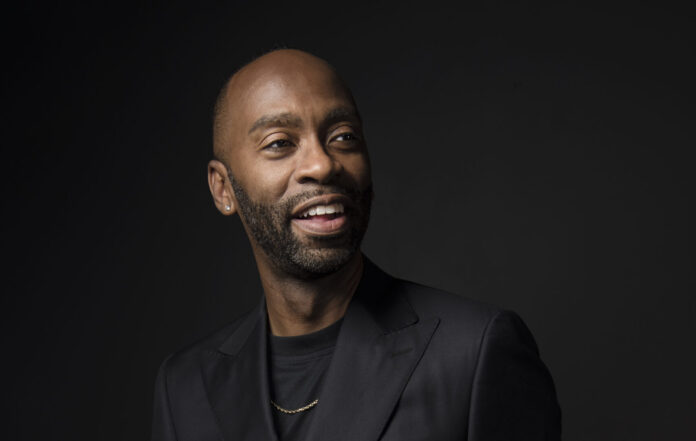Bayard Rustin (1912–1987) was a leading figure in the American Civil Rights Movement. Despite being the lead organizer of the March on Washington in 1963, his name has often been excluded from historical accounts of that struggle. Many believe this omission is due to Rustin’s open, unapologetic identity as a gay man at a time when homosexuality was still relegated to the shadows of society. A native of West Chester, Pa., Rustin was a tireless champion for the freedom of all, who worked until the end of his life to guarantee freedom and justice for people of color, the queer community, and all who are oppressed.
At People’s Light in Malvern, writer and director Steve H. Broadnax III has brought Rustin’s story to the stage in his home community. “Bayard Rustin: Inside Ashland” chronicles the sparks that lit the flame of Rustin’s activism and restores the leader to his rightful place in the annals of history. PGN spoke with Broadnax — who serves as People’s Light’s associate artistic director and is a professor at Penn State — about the importance of Rustin’s story and the power of performing in Chester County. Some responses have been condensed and lightly edited.
What drew you to Bayard Rustin as the subject for a dramatic piece, and what was the progression of development like from your first idea to getting it on the stage?
Initially, I was there at People’s Light as part of the New Play Frontiers program, directing a show with Dominique Morisseau. She was one of the initial commissioned playwrights, and she wrote a play about Mud Row in West Chester — that community in that area. The theater was hoping that she would write about Bayard Rustin in her play, but she went and wrote about the Melton Community Center and West Chester. Her play did reference Bayard Rustin, but it didn’t really talk about him. When I heard about that, I went on my own discovery. And especially me as a Black, same-gender-loving male, was like: “Oh my God, this is one of icons. This is where he lived, this is where he walked, the area where he grew up.” I became very intrigued by that.
At the time I was directing Dominique’s play, I went to Abbey [Adams, People’s Light’s former artistic director] and Zak [Berkman, current artistic director] and said this was something that interested me. He just parallels my life so much, being a queer man. He was raised by his grandmother, and I was raised by my grandmother. His activism. I shared a lot of common denominators with him, and I just thought I would love to write about him.
And People’s Light was obviously receptive to the idea.
I gave them writing samples, and they said okay. They gave me a shot at it, and that began my deep dive into Bayard Rustin. I had the privilege to do research not only with myself and my dramaturg, but to be in his community. I got to see the church he grew up in, his first childhood home, his teacher’s home. I was able to go to his first college, Cheyney, and talk to the man who presided over his funeral. I had access to all these documents that no one has seen.
Do you think that part of reclaiming Bayard Rustin’s legacy and centering him again in the narrative of American history is also recognizing where he comes from, in this area?
Absolutely. There is a local historian — her name is Miss Penny — who really carries a lot of the history of West Chester and who walked through his neighborhood. Literally walked me through his neighborhood. She would always emphasize that you have to know the community that built Bayard Rustin. The people he came into contact with every day in that community are the people who built the man we knew. It was essential to the research to understand the community. It was definitely intentional to focus on that.
What has the audience reaction been like?
It has been unlike anything I could have dreamed. First of all, can you imagine the Rustin family came? They embraced me, thought the work was beautiful. And that was a burden I was carrying: hoping they would think I did justice by the piece. They just raved about it. One of Rustin’s lovers is a character in the play. Mind you, I’ve only done research on this person. His name was Davis Platt, and he was a white male. He was Rustin’s lover in 1944, when the play takes place. The lover’s nephew came to the play and said, “Davis Platt was my uncle. The man you cast is identical to my uncle. You got it right on the head.” It was crazy as I watched relatives of these historical people come to the play. The play has gotten standing ovations every night, and I even got a Broadway producer who pulled me aside and said they want to do a commercial entity. It couldn’t have gone better than it’s going now.
“Bayard Rustin: Inside Ashland” runs through June 12 at People’s Light, 39 Conestoga Road, Malvern. A streaming version of the production will be available to rent from June 13–26. For more information, including Covid-19 protocols, visit peopleslight.org.
